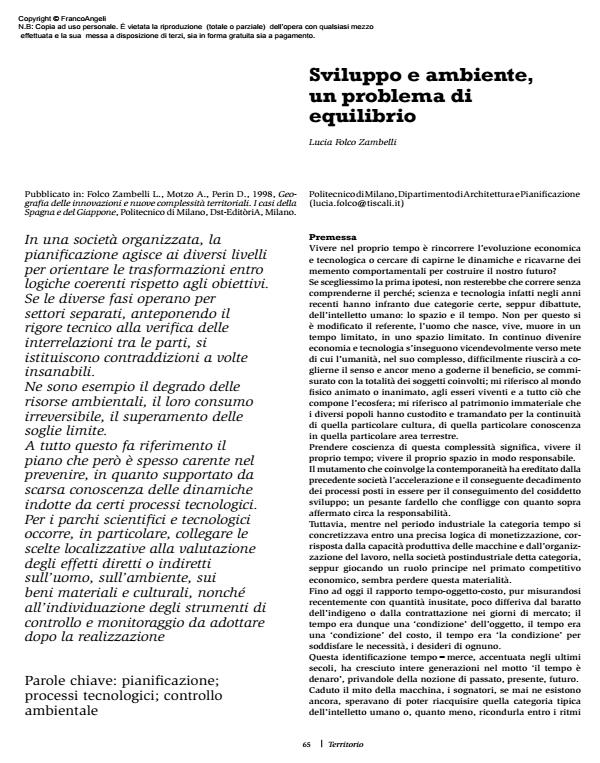Sviluppo e ambiente, un problema di equilibrio
Titolo Rivista TERRITORIO
Autori/Curatori Lucia Folco Zambelli
Anno di pubblicazione 2011 Fascicolo 2010/55
Lingua Italiano Numero pagine 6 P. 65-70 Dimensione file 682 KB
DOI 10.3280/TR2010-055011
Il DOI è il codice a barre della proprietà intellettuale: per saperne di più
clicca qui
Qui sotto puoi vedere in anteprima la prima pagina di questo articolo.
Se questo articolo ti interessa, lo puoi acquistare (e scaricare in formato pdf) seguendo le facili indicazioni per acquistare il download credit. Acquista Download Credits per scaricare questo Articolo in formato PDF

FrancoAngeli è membro della Publishers International Linking Association, Inc (PILA)associazione indipendente e non profit per facilitare (attraverso i servizi tecnologici implementati da CrossRef.org) l’accesso degli studiosi ai contenuti digitali nelle pubblicazioni professionali e scientifiche
In an organised society, planning acts on different levels to orient change within a logic that is consistent with the objectives. If the different stages take place in separate sectors, placing technical rigour before verification of the interrelations between the parts, contradictions arise which at times cannot be corrected. An example of this is seen in the degradation of environmental resources and their irreversible consumption beyond limit thresholds. The plan relates to all this, but it often fails to prevent it, because it is supported by scarce knowledge of the dynamics induced by certain technological processes. For science and technology parks it is particularly necessary to link location decisions to an assessment of the direct and indirect effects on humans, on the environment and on material and cultural assets as well as on the selection of the control and monitoring tools to be used after implementation.
Parole chiave:Planning; technological processes; environmental control
Lucia Folco Zambelli, Sviluppo e ambiente, un problema di equilibrio in "TERRITORIO" 55/2010, pp 65-70, DOI: 10.3280/TR2010-055011